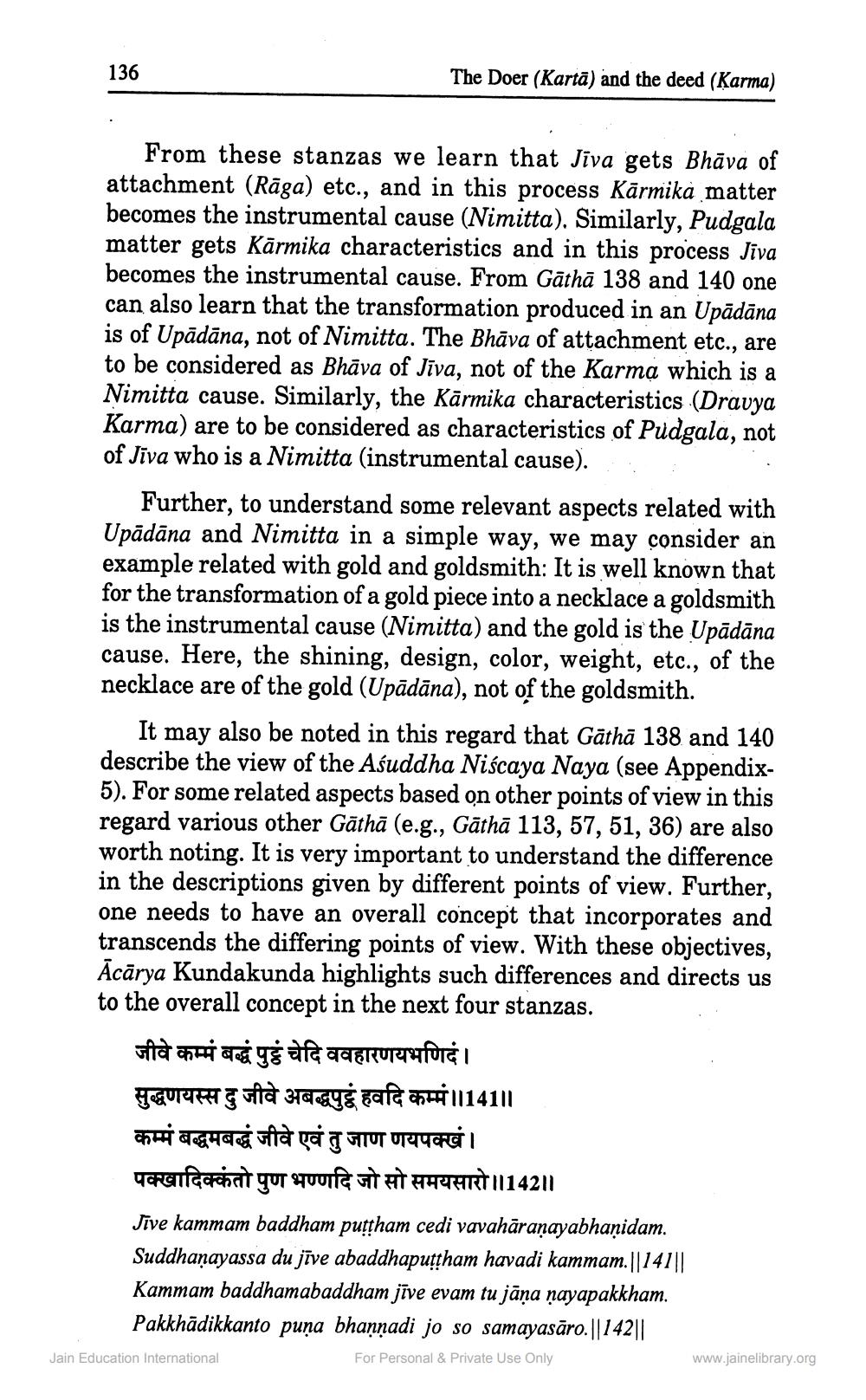________________
136
The Doer (Kartā) and the deed (Karma)
From these stanzas we learn that Jiva gets Bhāva of attachment (Rāga) etc., and in this process Kārmika matter becomes the instrumental cause (Nimitta). Similarly, Pudgala matter gets Kārmika characteristics and in this process Jiva becomes the instrumental cause. From Gāthā 138 and 140 one can also learn that the transformation produced in an Upādāna is of Upādāna, not of Nimitta. The Bhāva of attachment etc., are to be considered as Bhāva of Jīva, not of the Karma which is a Nimitta cause. Similarly, the Kārmika characteristics (Dravya Karma) are to be considered as characteristics of Pudgala, not of Jīva who is a Nimitta (instrumental cause).
Further, to understand some relevant aspects related with Upādāna and Nimitta in a simple way, we may consider an example related with gold and goldsmith: It is well known that for the transformation of a gold piece into a necklace a goldsmith is the instrumental cause (Nimitta) and the gold is the Upādāna cause. Here, the shining, design, color, weight, etc., of the necklace are of the gold (Upādāna), not of the goldsmith.
It may also be noted in this regard that Gāthā 138 and 140 describe the view of the Aśuddha Niscaya Naya (see Appendix5). For some related aspects based on other points of view in this regard various other Gāthā (e.g., Gāthā 113, 57, 51, 36) are also worth noting. It is very important to understand the difference in the descriptions given by different points of view. Further, one needs to have an overall concept that incorporates and transcends the differing points of view. With these objectives, Ācārya Kundakunda highlights such differences and directs us to the overall concept in the next four stanzas.
जीवे कम्मं बद्धं पुढे चेदि ववहारणयभणिदं। hagurraag gia 31a este cale ami ||14111 कम्मं बद्धमबद्धं जीवे एवं तु जाण णयपक्खं । पक्खादिक्कंतो पुण भण्णदि जो सो समयसारो॥142॥ Jive kammam baddham putham cedi vavahāraṇayabhaạidam. Suddhanayassa du jīve abaddhaputpham havadi kammam.||141||| Kammam baddhamabaddham jīve evam tu jāņa nayapakkham. Pakkhādikkanto puņa bhannadi jo so samayasāro. ||142||
Jain Education International
For Personal & Private Use Only
www.jainelibrary.org




